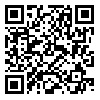Volume 8, Issue 20 (2005)
CLR 2005, 8(20): 161-186 |
Back to browse issues page
Download citation:
BibTeX | RIS | EndNote | Medlars | ProCite | Reference Manager | RefWorks
Send citation to:



BibTeX | RIS | EndNote | Medlars | ProCite | Reference Manager | RefWorks
Send citation to:
- -. Artificial Insemination Under Islamic Law. CLR 2005; 8 (20) :161-186
URL: http://clr.modares.ac.ir/article-20-4311-en.html
URL: http://clr.modares.ac.ir/article-20-4311-en.html
Abstract: (10703 Views)
By taking into account the importance of the family and its role in the establishment of human society and the emphasis placed by Islam on its protection and stability, neglecting and failing to deal with the new issues appearing in this filed is unjustifiable. One of these issues is artificial insemination. Which needs to be examined from different angles: legally, morally, psychologically, etc. the right to have children, in cases where the spouses or one of them is infertile, should not be an excuse for ignoring moral principles and for having children through unnatural means or out of wedlock.
In the last century vitro fertilization and other artificial insemination techniques were examined by Western scientists in detail. The birth of Louis Brown in 1978 was the positive result of these examinations and researches.
In this paper, the Islamic view on artificial insemination, based on Shiite law, from the point of view of legality or illegality, lineage, inheritance and marriage is discussed. This paper highlights different aspects of artificial insemination and clarifies some controversial questions in this respect.
The criterion for the legality and illegality of artificial insemination, according to the majority of Islamic jurisits, depend on the existence or non-existence of a lawful relationship between a man and a woman. A child born from an unmarried couple, or born through artificial insemination enjoys certain rights, such as lineage, inheritance, maintenance, etc.
.
Received: 2004/07/7 | Accepted: 2004/08/8 | Published: 2005/02/19
| Rights and permissions | |
 |
This work is licensed under a Creative Commons Attribution-NonCommercial 4.0 International License. |







